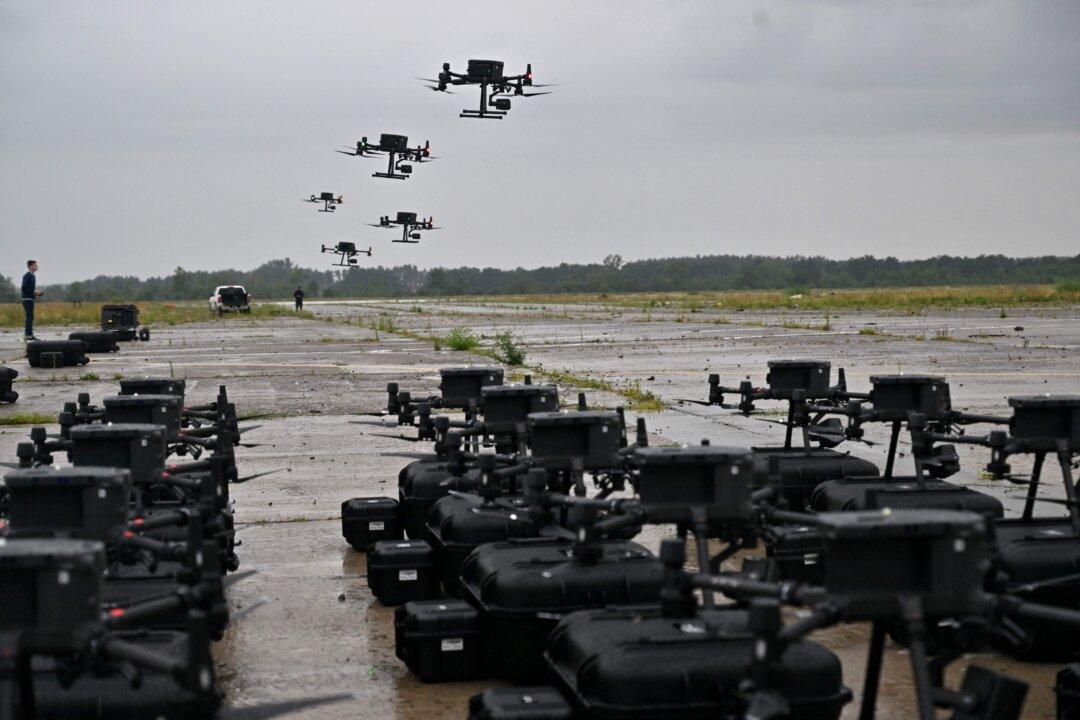Commentary
The U.S. government
officially identifies China as a near-peer competitor. This was undoubtedly true 20 years ago. But in 2024, with China outstripping the United States in scientific research while maintaining a shipbuilding capacity 232 times greater than that of the United States, continuing to label China as being merely a near-peer competitor risks U.S. policymakers underestimating the Chinese regime.
To show that continuing to describe China as a “near-peer” competitor versus a full-fledged peer no longer makes any sense. We will compare its overall economy, military-industrial capacity, advanced technology and science, global influence, and military power to that of the United States.
More specifically, as noted by the Mises Institute, nominal GDP includes the consumption that results from government spending, including the trillions of deficit government spending on welfare programs,
generous government employee salaries and retirement benefits, defense contractors, etc. As the federal government doles out deficit-financed dollars, those receiving those dollars consume more, driving up GDP. It is also worth noting that China leads the United States in
purchasing power parity (PPP)-based GDP, $30.3 trillion versus $25.4 trillion, respectively.
Of course, the answer is no, especially when you consider that manufacturing accounted for only about
11 percent of U.S. GDP, whereas manufacturing accounted for 28 percent of China’s GDP. Additionally, China is by and far away the
world leader in manufacturing, outstripping the United States by 71 percent (29 percent of world output versus 17 percent, respectively).
China’s substantial lead over the United States in industrial might translates over to military-industrial capacity. Indeed, not only does
China outproduce the United States in steel production by a factor of 10 to 12, but China has also virtually cornered the market on mining and
refining rare earth elements that are hyper-critical for the production of radars, missiles, high-performance jet engines, etc.
An Information Technology and Innovation Foundation (ITIF) study
found that “China has taken a commanding lead in technologically advanced and strategically important industries at the heart of the global economy by capturing market share from the United States and other advanced economies.”
Further, while the United States once dominated the shipbuilding industry, today, as revealed by a leaked U.S. Navy briefing slide, China’s shipbuilding capacity is
232 times greater than the United States. More specifically, Chinese shipyards have a manufacturing capacity of roughly 23.25 million tons, whereas U.S. shipyard capacity is less than 100,000 tons. The authors of the
leaked briefing predict that by 2035, China will have amassed 475 naval warships and that the United States will have between 305 and 317.
To put things in perspective, China’s military-industrial capacity is truly massive, as was the case for the United States prior to World War II. This gives China the ability to quickly recover from battlefield losses, an ability the United States no longer has.
So when it comes to military-industrial capacity, the question is not whether China is a near-peer competitor of the United States but whether the United States even qualifies to be considered a near-peer competitor of China.
But what about technology and science? Surely, the United States fields far more advanced weapon systems? Sadly, while this would have been true 20 years ago, decades of the Chinese regime
stealing $300 billion to $600 billion per year of advanced industrial and military intellectual property, in combination with its own massive research efforts, have not only closed the gap, but a
recent report by the Australian Strategic Policy Institute (ASPI) concludes that China leads the world in
37 out of 44 technologies spanning defense, space, robotics, energy, the environment, biotechnology, artificial intelligence (AI), advanced materials, and key quantum technology areas. The ASPI also concludes that all the world’s top 10 research-leading research institutes are now based in China and that collectively, they generate nine times more high-impact research papers than the second-ranked country (most often the United States).
Additionally,
according to Nature magazine, as of 2023, China has overtaken the United States in contributions to research articles published in high-quality natural science journals.
Hence, while the United States does maintain the lead in such technology as
jet engines, the idea that it still vastly outclasses China in terms of technology and science is false.
Then, we have the complex question of who exerts the most global influence. For many decades after World War II, and especially after the collapse of the Soviet Union, the combination of military and economic power made the United States the world’s most influential country. And even today,
58 percent of the value of foreign reserve holdings worldwide are U.S. dollars. On the other hand,
a study conducted by the Lowry Institute shows that as of 2018, China had become the No. 1 trading partner of two-thirds of the world’s countries (128 out of 190), with 90 of these countries trading more than twice as much with China as with the United States.
In addition, both China and the United States are members of the United Nations Security Council. So depending on how you want to weigh things, a case could be made for the United States or China. Even if the United States still wields the most overall influence by some measures, that does not mean China is not a peer competitor.
Finally, we get to the issue of military power. This is a topic worthy of books and very lengthy papers. But to make a very long story super short, in 2024, the U.S. Navy and Air Force are both more powerful than their Chinese counterparts. However, the power gap is rapidly closing. In particular, China’s navy has more ships than the U.S. Navy, and that
gap is only going to continue to grow. While the U.S. Navy currently is a superior blue-water navy, the Chinese regime is rapidly adding blue-water capabilities that will allow it to challenge the United States
anywhere in the world in as little as 11 years.
Finally, while the Chinese regime has only a fraction of the number of nuclear weapons that the United States has, its nuclear missile program is very advanced, having both
land-based and submarine-based nuclear missiles capable of reaching the United States. And each year, the regime adds more, with the U.S. Department of Defense estimating it will have
1,000 nuclear warheads in just six years from now.
Hence, while the U.S. military is currently superior to that of China, the regime is closing the gap even as both the U.S. Navy and Air Force are shrinking and struggling to maintain the ships and planes they have. When you factor in China’s huge advantage in military-industrial capacity, which gives it an unmatched capability to rapidly replace any losses it incurs, it is hard not to conclude that from a military perspective, China is now a peer competitor.
In conclusion, after comparing economic power, military-industrial capacity, levels of technology and science, global influence, and military power, it is obvious that continuing to call China a “near-peer competitor” of the United States is not only plain silly but also promotes a false sense of security on the part of U.S. policymakers.
The bottom line is that communist China is very much a peer competitor. Those who do not accept this fact should not be involved in formulating and executing U.S. foreign policy.
Views expressed in this article are opinions of the author and do not necessarily reflect the views of The Epoch Times.







